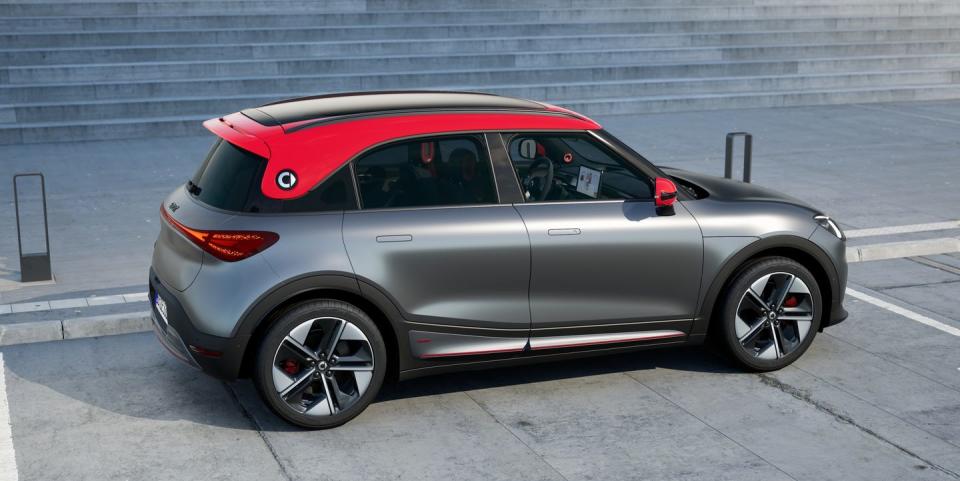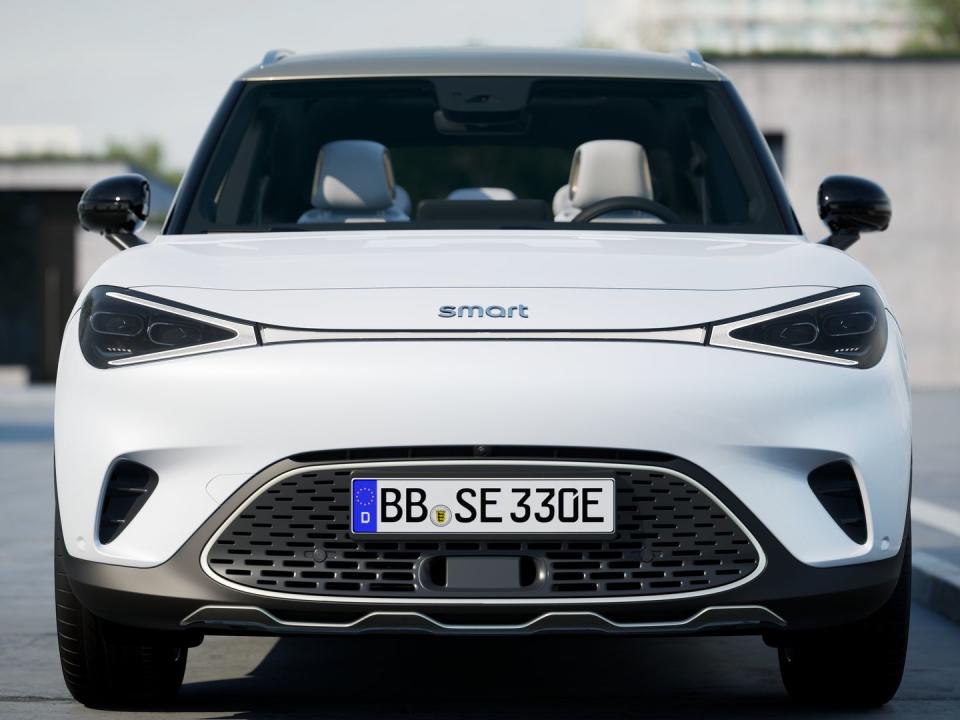Smart Gets Sensible with the New #1 (Hashtag One)

Smart left the U.S. market in 2019, having established the limits of our enthusiasm for its quirky, gawky city cars. Yet the company's American misadventure was only a small part of the brand's wider commercial failure, one that had led to the loss of a reported $3.6 billion before it was fully absorbed into the Daimler empire in 2006.
Smart, therefore, is taking a radically new direction and is being relaunched as a joint venture between Mercedes-Benz and the Geely Group in China (which owns Volvo, Polestar, and Lotus, among other brands). Going forward, Smart will offer only EVs, and the first of these—the #1—uses Geely's SEA electric platform and will be built in Xi'an, Shaanxi Province. It will be sold in China and Europe, but there are no plans to bring the brand back to the U.S. But as we figured you’d like to know what you're missing out on, we drove one in Portugal.

Let's start with the name. The #1 really is meant to be said as Hashtag One, which is both ridiculous and strangely catchy; we're told to expect future Smart models to keep the same format. Although much larger than any previous Smart, and nearly twice as heavy as the Fortwo, the #1 is smaller than the segment average, a 168.1-inch length undercutting the Volvo XC40 Recharge and Mercedes-Benz EQA. There is something definitely Mercedes-like about the full-width rear light bar, but the rest of the styling has an undeniable cute charm.
The interior is impressive, both in terms of space—it is far bigger inside than it feels like it should be—and also in design. There is enough room for full-size adults to sit behind each other, and although the roofline's stroller-hood profile cuts into the rear-door glass, the cabin feels light and airy. The large center console offers a charging tray, cupholders, and a chilled storage box. Luggage space is limited, though, with just 11 cubic feet behind the rear seat, plus a tiny frunk under the hood.
Fit and finish in the cabin is good, and there are some interesting touches, such as the way LED illumination is integrated into the metal air vents and the door panels. Almost all physical switchgear has been culled, with functions controlled by the large 12.8-inch touchscreen in the center of the dashboard. The screen looks good, but the user-interface of our test cars seemed unfinished, with spelling mistakes and a more concerning failure: Toggling the tab for the stability-control system to what seemed to be its "on" position actually turned it off. While Volvo and Polestar both use the Android Auto operating system, the Smart's is based on Geely’s own ECARX, which does not support either Android Auto or Apple CarPlay. It does, however, feature a cutesy animated fox that roams the submenus.
All #1s will use the same lithium-ion battery pack, which we estimate should provide 59.4 kWh of usable capacity. The base model directs the battery's energy to a single 268-hp rear motor, while the range-topping Brabus adds a second 154-hp front motor for a total output of 422 horsepower. All models support DC fast-charging at speeds of up to 150 kW, and all but the base version have a 22.0-kW onboard charger, which is increasingly common in Continental Europe. Range under the optimistic European WLTP test cycle varies from 273 miles for the most efficient rear-drive version down to 248 miles for the Brabus.
Those numbers are all toward the upper end of segment standards, and the #1 delivers a composed driving experience. Despite a claimed 3942-pound curb weight, acceleration in the rear-motor version is brisk, especially low down, and although the #1's Continental EcoContact tires sometimes scrabbled for traction off the line, the car felt secure once moving. At 80 mph, the cabin stayed hushed and refined.
Although the #1 has selectable drive modes, it lacks the adaptive dampers that would allow these to add discipline to its soft suspension. Ride comfort was good on Portugal's generally smooth asphalt, but corners brought lots of body roll, and the low-rolling-resistance tires meant there was limited cornering grip and a tendency for the front end to run wide at modest speeds. The chassis also felt floaty over rougher surfaces—this isn't a car that encourages the driver to push harder.

 Yahoo Autos
Yahoo Autos 